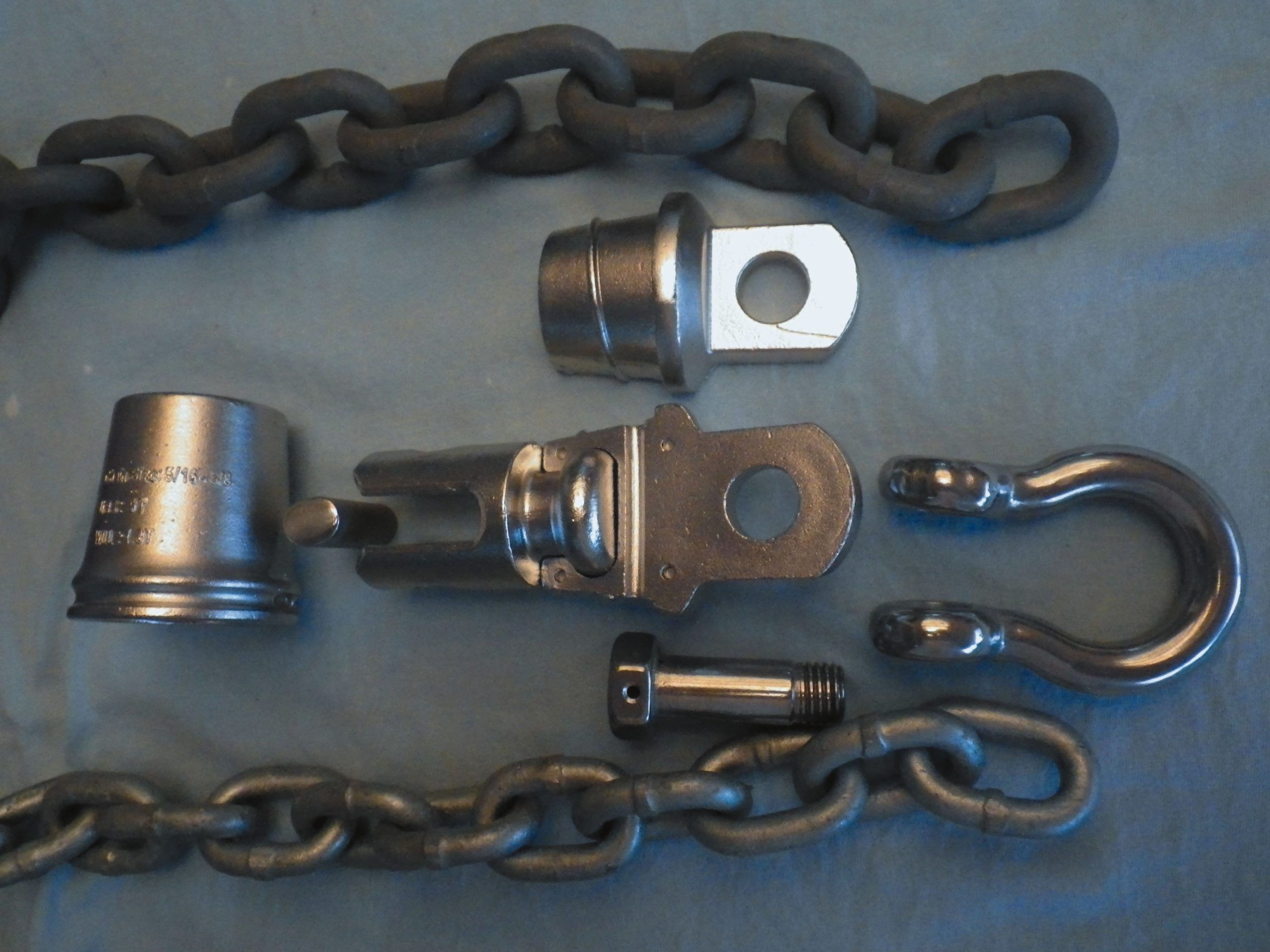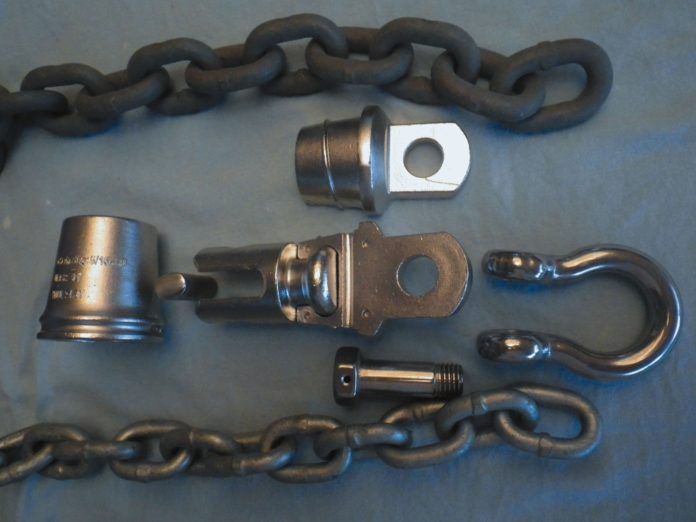In our article on anchor swivels (see “Anchor Swivels: Caution Required“), we reiterated our view that swivels are unnecessary in most anchoring situations. For those who insist on using one, we suggested staying away from cheap varieties, and using only load-tested designs that exceed the rating of the anchor chain from every angle of pull. (None of the ones we have found that meet this criteria are cheap.) Shortly after that article, Mantus Anchors, a relatively new maker of anchors and anchoring accessories, introduced its swivel, which it claims is as strong as an ordinary shackle and priced in a range that ordinary cruisers can stomach.
The Mantus swivel is currently only available for U.S. standard chain in three sizes (between a quarter- and a half-inch); however, Mantus plans to introduce metric chain swivels this year. The swivels will exceed the rated strength of BBB, G30, and G43 chain in these sizes, and according to the maker, they will even exceed that of G70.
The swivels comprise five stainless-steel components. Each swivel has a custom-made shackle and clevis pin (to secure the anchor), three-piece ball-and-socket joint made of cast stainless- steel, an oval clevis pin for the chain, and a threaded, conical collar to tie and lock the assembly together. The collar is locked into place with supplied locking wire. The swivel feels substantial, and the ball-and-socket joint is smooth and free-running when turned by hand. It all looks and feels very reassuring.

Stronger, yet still affordable metallurgy usually requires bigger components, and the Mantus swivel is no exception. Of course, there are perfectly good, smaller (and stronger), reliable, Grade B galvanized bow shackles available from American manufacturers, including Peerless, Crosby and Campbell (see PS August 2015 online). The 7/16-inch stainless shackle that Mantus markets is much bulkier than the proof-tested, galvanized, alloy 3/8-inch Grade B shackle (12-ton minimum break strength) from these manufacturers. The Mantus shackle is also too big to comfortably fit the shackle hole of some appropriate anchors. (The addition of another shackle can be a problem.)
One question we have is how these swivels will affect anchoring. As our previous report noted, rode diameter does have an impact on anchor penetration (see PS February 2014). The swivel, designed to match 5/16- through 3/8-inch chain, weighs 3 pounds, and measures about 5 inches long by 1-inches in diameter, excluding the shackle.
This swivel’s weight could impact anchor balance as it sets and will surely introduce added friction that can inhibit the anchors ability to bury in some bottoms. In our February 2014 anchoring report, we demonstrated the effects of chain size on the setting ability of an anchor, and it seems that a swivel shackle of these dimensions would have an effect similar to using oversized chain.
The upside is that with all that steel, the 5/16- to 3/8-inch swivels certainly look beefy. We have not load tested them yet, but the maker is confident that this size shackle will meet minimum breaking strength ratings of almost 20,000 pounds. (With a very conservative 5:1 safety factor, this gives it a working load of 4,000 pounds.) Nevertheless, we still have concerns about the effects of corrosion on stainless steel in anchor rode, particularly for long-term anchoring, when the swivel might be buried in an anoxic mud that inhibits the stainless steels ability to fight corrosion. (Over the years, we’ve fielded a handful of reports of stainless-steel swivels and shackles that have failed in these conditions.)
The swivel is very easy to incorporate into the rode. You slide the collar up onto the chain, join the swiveling chain connector to the chain with an oval clevis pin (oval to maximize strength). The two-part swivel body is placed over the ball of the joint, and the collar is slid down and screwed into place. The collar can be moused with seizing wire, supplied by Mantus. For double security, one could add high-strength Loctite to the thread. Finally, the assembly is attached to the anchor with the supplied stainless-steel shackle, bow through shank, and the clevis pin of the shackle is further secured with mousing wire and Loctite again, if desired.
The shackle clevis pin has a hexagonal head, to reduce snagging on the bow roller. Since the swivel is so big, you will need a generously wide bow roller anyway.
Conclusion
We still see no convincing reason to add a swivel to an anchor setup, but we know that there are sailors who insist on them. We prefer load-rated galvanized swivels because they offer clear indication when they need to be replaced, but for those who demand stainless, the Mantus appears to be stronger, better made, and more reliable than other swivels in this price range. The smaller ones retail for $65, the larger ones $85.






































The mantus shackle is to big to go through most bow rollers.
I bought the S2 sized to fit 8-10mm g40 chain but it wouldn’t go through the anchor shaft hole.
I had to change it to the S1, it fitted but doesn’t fit the bow roller either.
I run MF g40 8mm double zinc chain
And a Spade anchor 20kg.